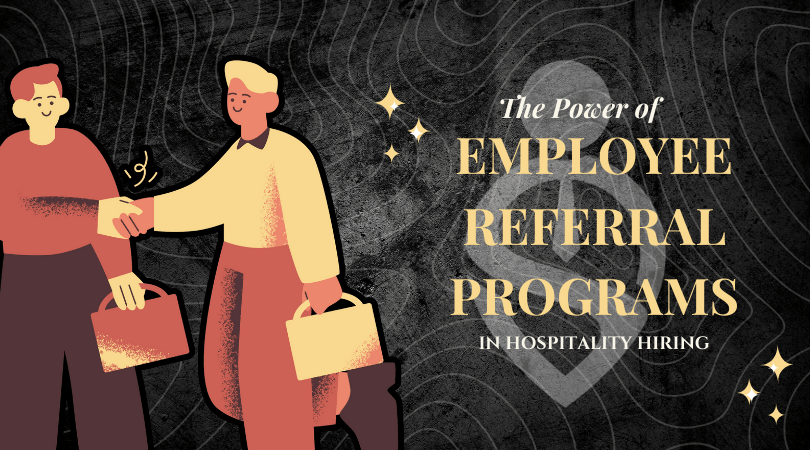Hiring the right restaurant staff is one of the most important things an operator can do to keep the business running smoothly. The restaurant industry moves fast, and turnover remains one of its biggest challenges. According to the National Restaurant Association, turnover rates in hospitality consistently top 70% annually, costing restaurants thousands per year in rehiring and retraining costs.
To combat this, restaurant leaders need to move beyond simply filling roles and start hiring for long-term success. That means focusing on key hiring qualities that predict reliability, teamwork, and genuine passion for hospitality.
In this guide, we’ll explore the top hiring qualities for restaurant staff, why they matter, and how modern hiring tools like StaffedUp help restaurant operators identify and retain top talent from day one.
Why Hiring the Right People Matters More Than Ever
The difference between a smooth shift and a stressful one often comes down to who’s on your team. A single poor hire can lead to slow service, customer complaints, and frustrated staff. On the other hand, a well-rounded, motivated team boosts morale, improves guest experiences, and drives repeat business.
Hiring decisions directly impact:
- Customer satisfaction: Guests notice when employees care. Friendly, confident staff make people want to return.
- Efficiency: Reliable workers reduce training time and keep operations running smoothly.
- Team culture: Staff who share values and attitudes support each other and prevent turnover.
- Revenue: Satisfied customers spend more and tip better, directly improving your bottom line.

The Top Hiring Qualities for Restaurant Staff
Let’s break down the most important traits to look for when hiring — from front-of-house servers to back-of-house cooks and managers. These aren’t just “nice-to-have” attributes; they’re the foundation of a high-performing restaurant team.
1. Positive Attitude
A positive attitude is non-negotiable in hospitality. Restaurant environments can be hectic, and staff need to stay calm and upbeat under pressure.
Look for candidates who:
- Smile easily and maintain friendly eye contact.
- Speak positively about previous jobs or experiences.
- Show energy and enthusiasm during interviews.
A positive attitude spreads quickly. When one person brings good energy, it lifts the entire team — especially during busy shifts.
Pro tip: During interviews, ask:
“Tell me about a time you stayed positive when something went wrong at work.”
Their response will reveal how they handle stress and approach challenges.
2. Reliability and Work Ethic
Even the most skilled employee is useless if they don’t show up. Reliability — showing up on time, completing tasks, and following through — is one of the most valuable hiring qualities for any restaurant employee.
Signs of a reliable worker:
- Shows up early for interviews.
- Responds quickly to communication.
- Has a record of consistent past employment.
To assess work ethic, ask about situations where they had to stay late or take on additional responsibility. Candidates who value teamwork will share examples of “stepping up” when needed.
StaffedUp’s applicant tracking system (ATS) helps restaurants spot reliable workers faster by allowing operators to see communication history, application timestamps, and pre-qualifying questions — all in one simple dashboard.
3. Team-Oriented Mentality
A restaurant runs like a machine — every part depends on the others. A great employee knows their role and how it connects to everyone else’s.
When hiring, prioritize candidates who:
- Use words like “we” instead of “I”.
- Mention working together to solve problems.
- Demonstrate empathy toward coworkers and guests.
Ask:
“Tell me about a time when you helped a coworker who was struggling.”
This reveals collaboration skills and emotional intelligence — key traits for lasting success in hospitality.
4. Communication Skills
Restaurants thrive on communication. Whether it’s a server relaying an order to the kitchen or a host managing wait times, clarity prevents chaos.
Strong communication doesn’t mean being loud — it means being clear, respectful, and adaptable. Look for candidates who:
- Listen carefully.
- Speak confidently but politely.
- Ask thoughtful questions about the role or team.
Encourage staff to communicate directly and positively. Misunderstandings can create tension; open dialogue prevents that before it starts.

5. Adaptability and Stress Management
The restaurant environment changes minute by minute — a rush hits, a reservation cancels, or a line cook calls out sick. Employees who can adapt without losing composure are gold.
Look for signs of flexibility:
- Experience in different restaurant types.
- Stories of handling change or unexpected challenges.
- Calm body language during interviews.
You can also simulate a stressful situation in an interview by asking:
“What would you do if your section got three tables at once and one guest was upset about a delay?”
This helps identify problem solvers who think quickly and stay cool.
6. Attention to Detail
From food presentation to order accuracy, details matter. An attentive employee prevents costly mistakes and improves guest satisfaction.
Look for candidates who:
- Notice small things (cleanliness, organization, body language).
- Reference details from your conversation later in the interview.
- Talk about consistency or pride in their work.
Attention to detail also signals professionalism — an often-overlooked quality that separates a “good” worker from a “great” one.
7. Passion for Hospitality
Hospitality is about making people feel welcome. Employees who love creating great experiences tend to stay longer and perform better.
Passionate staff often:
- Smile naturally when describing guest interactions.
- Express excitement about working in restaurants.
- Mention long-term career goals in hospitality.
Even in entry-level roles, a genuine interest in service is invaluable. You can train skills, but you can’t train attitude.
When restaurants hire through StaffedUp, they can include pre-qualifying application questions like: “Why do you enjoy working in restaurants?”
These insights help operators quickly identify passionate applicants who align with their brand’s values.
8. Cultural Fit
A candidate may have experience, but if they clash with your restaurant’s culture, it can lead to tension and turnover.
Cultural fit doesn’t mean everyone must act the same — it means your staff share a similar work ethic, respect, and approach to service.
During interviews, communicate your restaurant’s values clearly. For example:
- “We focus on teamwork and mutual respect.”
- “Our staff communicate openly with management.”
Then, ask candidates how they see themselves fitting into that environment.
9. Integrity and Accountability
Restaurants handle money, sensitive customer data, and team dynamics daily. You need employees you can trust. Integrity is about honesty and responsibility — even when no one’s watching.
To gauge integrity, ask situational questions:
“What would you do if you saw a coworker taking shortcuts or breaking policy?”
Strong candidates will emphasize honesty, communication, and accountability. Making sure you’re using the right restaurant tech is important as well to assist with accountability.
10. Desire for Growth
Employees who want to grow — whether through learning new skills or moving into management — bring long-term value to your restaurant.
Look for people who ask questions like:
- “Are there opportunities for advancement?”
- “Do you offer training or mentorship?”
This curiosity shows ambition. Even if your restaurant isn’t large, providing development opportunities helps you retain your best workers longer.
How to Identify These Qualities in the Hiring Process
Knowing what to look for is only half the battle. The next step is building a hiring system that helps you identify and track these qualities consistently.
Here’s how:
Use Pre-Qualifying Questions
Ask targeted questions on your application forms to quickly evaluate soft skills and motivation. Example:
- “Describe your favorite customer interaction and why it stood out.”
Review Communication Speed
Track how quickly applicants respond to messages or confirm interviews. Reliable, motivated candidates move fast.
Conduct Structured Interviews
Ask every candidate the same set of situational and behavioral questions. This keeps evaluations consistent and reduces bias.
Follow Up After the Interview
Gauge professionalism by how they respond post-interview. Do they send a thank-you message? That small gesture often signals reliability and respect.

Case Study: How StaffedUp Helped a Multi-Unit Operator Hire for Quality, Not Just Quantity
A Midwest-based restaurant group operating over 100 dining locations struggled with turnover exceeding 110% annually. Their managers were spending too much time reviewing unqualified applications and not enough time developing their teams.
After implementing StaffedUp, the operator saw measurable improvement in 90 days:
- 42% faster time-to-hire thanks to pre-screening questions and mobile applications.
- Reduced no-shows by 35% through automated text communication.
- Higher retention — staff hired through StaffedUp stayed an average of 2.3 months longer.
By focusing on hiring qualities like reliability, attitude, and cultural fit, rather than just filling roles, they built a stronger, more consistent team across all units.
How Technology Supports Quality Hiring
Even with the best instincts, restaurant managers can only do so much manually. That’s why modern hiring technology plays a huge role in identifying the right candidates quickly.
Tools like StaffedUp help operators:
- Reach more candidates through social media job sharing.
- Pre-screen applicants with custom qualifying questions.
- Communicate instantly via text.
- Track every step of the hiring process from one dashboard.
This ensures that great candidates don’t slip through the cracks — and that your hiring process reflects the fast, mobile-first world restaurant applicants expect.
Conclusion: Hire for Character, Train for Skill
In restaurants, the best hires aren’t always the ones with the most experience — they’re the ones with the right attitude, integrity, and passion.
By focusing on these key hiring qualities for restaurant staff, you can build a dependable, motivated team that represents your brand every day.
Hiring isn’t just about filling open roles — it’s about shaping your restaurant’s future. With the right process and the right tools, like StaffedUp, you can stop chasing applicants and start building a team that sticks.






































